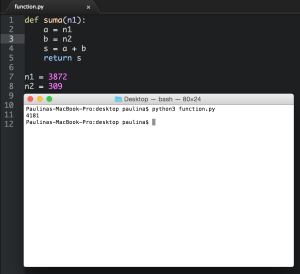First you define the name of the function and add in parenthesis the variable you’re gonna use, then you must equal different variables to the ones you’re gonna use for your program, after that you can create the logic of the function, or what it’s supposed to do with said variables, finally you can return the result.
-
Recent Posts
Recent Comments
Archives
Categories
Meta

